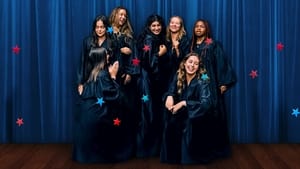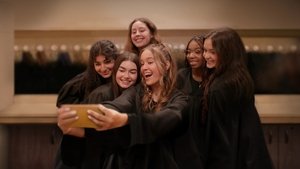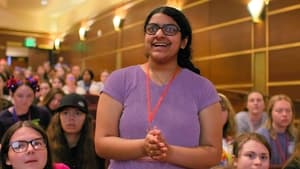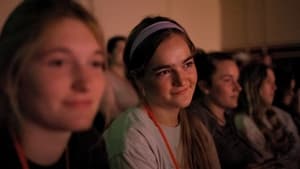
Video Sources 24 Views Report Error

Synopsis
In the documentary “What Would American Democracy Look Like in the Hands of Teenage Girls?”, the spotlight turns to a group of young female leaders as they embark on an immersive experiment in the heart of Missouri. These teenage girls, from diverse and often starkly different backgrounds, are brought together for a unique challenge: to build a democratic government from the ground up. The documentary provides an intimate and inspiring look into the future of leadership, as it captures the girls navigating the complexities of politics, power, and collaboration.
The film begins by introducing the participants, who hail from various socio-economic, racial, and cultural backgrounds. Some of the girls have grown up in urban environments, surrounded by progressive ideals, while others come from rural, conservative communities. Their differences become apparent from the start, with each girl bringing her own set of values, perspectives, and beliefs about democracy, leadership, and what it means to serve the people. Despite their contrasting worldviews, they all share one thing in common: a passion for making their voices heard and shaping the future.
As the experiment unfolds, the girls are tasked with creating a fully functioning government. They must elect leaders, form political parties, draft legislation, and tackle real-world issues that reflect the challenges facing American society today. From healthcare and education to immigration and the environment, the girls engage in heated debates and thoughtful discussions, each advocating for what they believe is the best path forward for their government.
Throughout the documentary, the young leaders face the hurdles that often come with governance: negotiating compromises, building coalitions, and handling disagreements. Some are quick to assert their dominance, while others find it difficult to speak up in the face of strong personalities. The process is messy at times, but the girls learn to navigate their differences and develop a deep respect for the democratic process. In doing so, they also discover the importance of empathy, understanding, and the need to find common ground.
The documentary does not shy away from the personal struggles the girls face as they balance the weight of leadership with their own insecurities and self-doubt. Some grapple with the pressure to prove themselves in a male-dominated world, while others question their ability to lead when confronted with opposing viewpoints. Through their experiences, they learn that leadership is not about having all the answers, but about listening, learning, and being open to change.
As the girls’ government takes shape, the documentary paints a broader picture of the potential for future generations of women in leadership. It shows that young women, even those still in their teens, have the capacity to think critically, lead with conviction, and challenge the status quo. The experiment not only highlights the importance of civic engagement but also demonstrates that democracy thrives when diverse voices are included and empowered.
In the end, “What Would American Democracy Look Like in the Hands of Teenage Girls?” is a powerful and hopeful exploration of youth leadership. It offers a glimpse into a future where young women are at the forefront of shaping democracy, and it serves as a reminder that the next generation has the vision, passion, and ability to create meaningful change.
Original title Girls State
IMDb Rating 6.6 789 votes
TMDb Rating 8 9 votes
Director
Director
Cast
Self
Self
Self
Self
Self
Self
Self
























